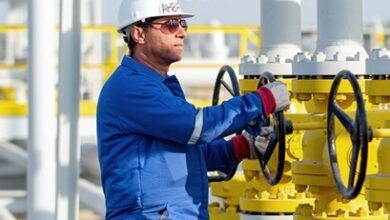Asset Integrity: Communication, collaboration make the difference
By Katie Mazerov, Contributing Editor

Predictive maintenance programs and process safety on drilling rigs are important elements of asset integrity. However, those protocols require collaboration, communication and consistency between operators and drilling contractors to build a long-term asset integrity culture. “Asset integrity must be an integral part of the rig management system, with company leadership involved,” Brian Hay, Director of Rig Engineering for BP, said at the 2014 IADC Asset Integrity & Reliability Conference on 20 August in Houston. “When we look at the management systems of the drilling contractors we work with, by and large the systems are good. But, at the end of the day, it comes down to the quality with which we apply those systems.”
An effective asset integrity management system must encompass organization; understanding of responsibilities and resources; standards and procedures; performance monitoring; management review and improvement. “Managing asset integrity means that critical equipment performs at a level of functionality to either prevent a major hazardous event or stop that event from escalating,” he said. US Safety and Environmental Management Systems (SEMS) guidelines call for procedures to be in place on rigs to ensure that equipment is designed, built, installed, tested and inspected. They also must be monitored and maintained on a consistent basis with appropriate service requirements, manufacturer recommendations or industry standards.
“Major hazards include anything that results in multiple fatalities, extensive damage to the structure or facility and has massive effects on the environment. Operators and drilling contractors must work collaboratively early on to identify and understand the major hazards under which they will be operating,” Mr Hay said.
Over the past three years, BP has been involved in an effort examining rig assessments and audits for gaps to industry standards and practices. “We found an amazing consistency in gaps around maintenance systems or asset integrity, regardless of region or rig type,” he noted. Specifically, the gaps center on extension of boundaries, or “creeping changes,” to inspection and maintenance guidelines, he explained.
Mr Hay raised several issues that operators and drilling contractors need to consider to improve asset integrity:
- Start the asset integrity process before delivery. “If you wait until the rig is operational, you’ve already lost valuable information. Rig engines and cranes run for months at the shipyards before they are turned over to the rig owner. It is important that any work done during that interim period be captured and preserved into the rig’s maintenance system so it can move forward with that history.”
- Operators and drilling contractors must collaborate and “think through” projects to identify and understand the hazards under which they will be working.
- Once hazards are known, identify engineering barriers that can stop a major event from happening or escalating.
- Forecast the long-term life of assets and assess the obsolescence factor. “BP is taking a hard look at the implications of running rigs for longer than they were designed,” he said.
- Basic rig procedures should be the same on all rigs, regardless of the region.
- Develop programs where incentives are based not just on production but on best practices.




